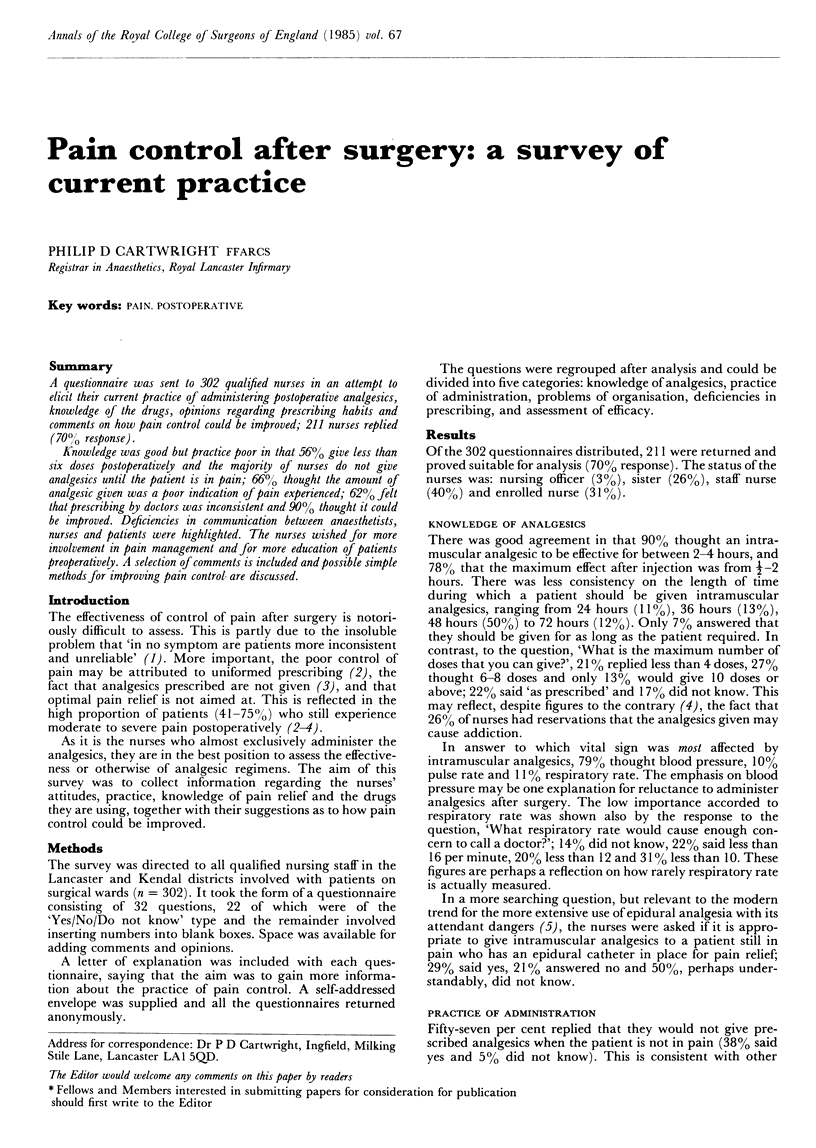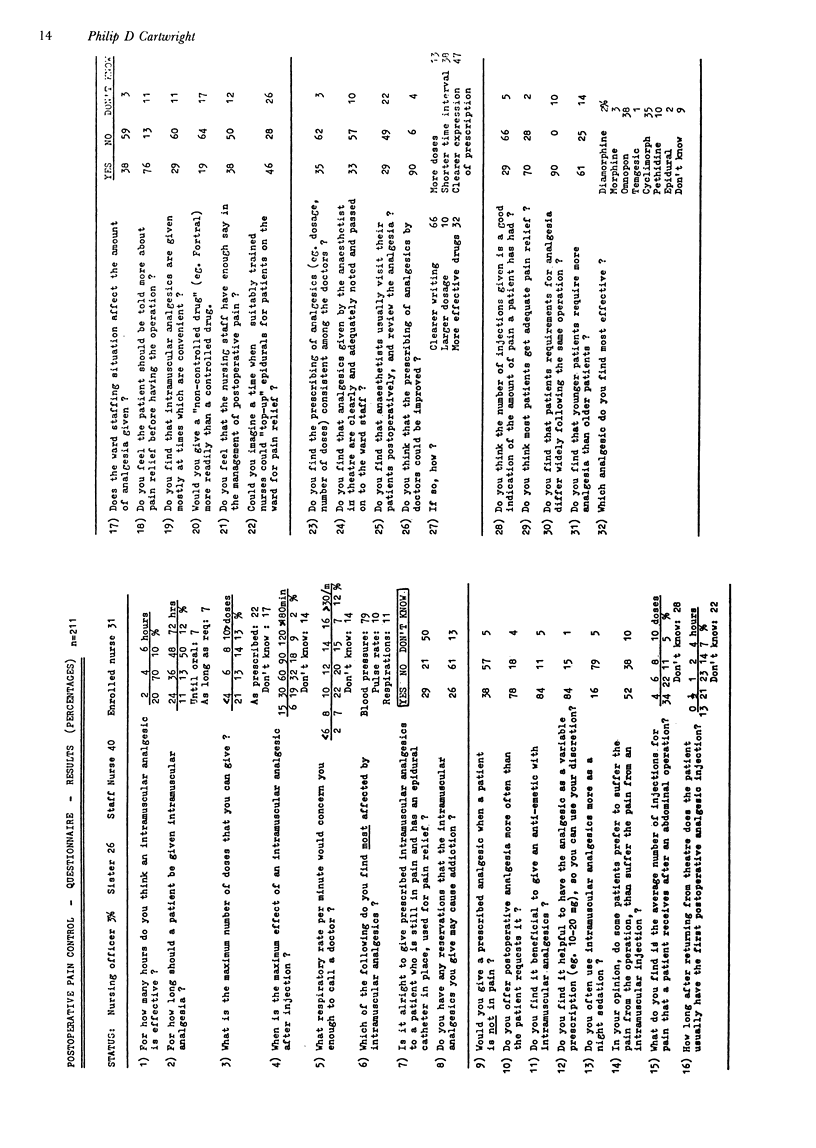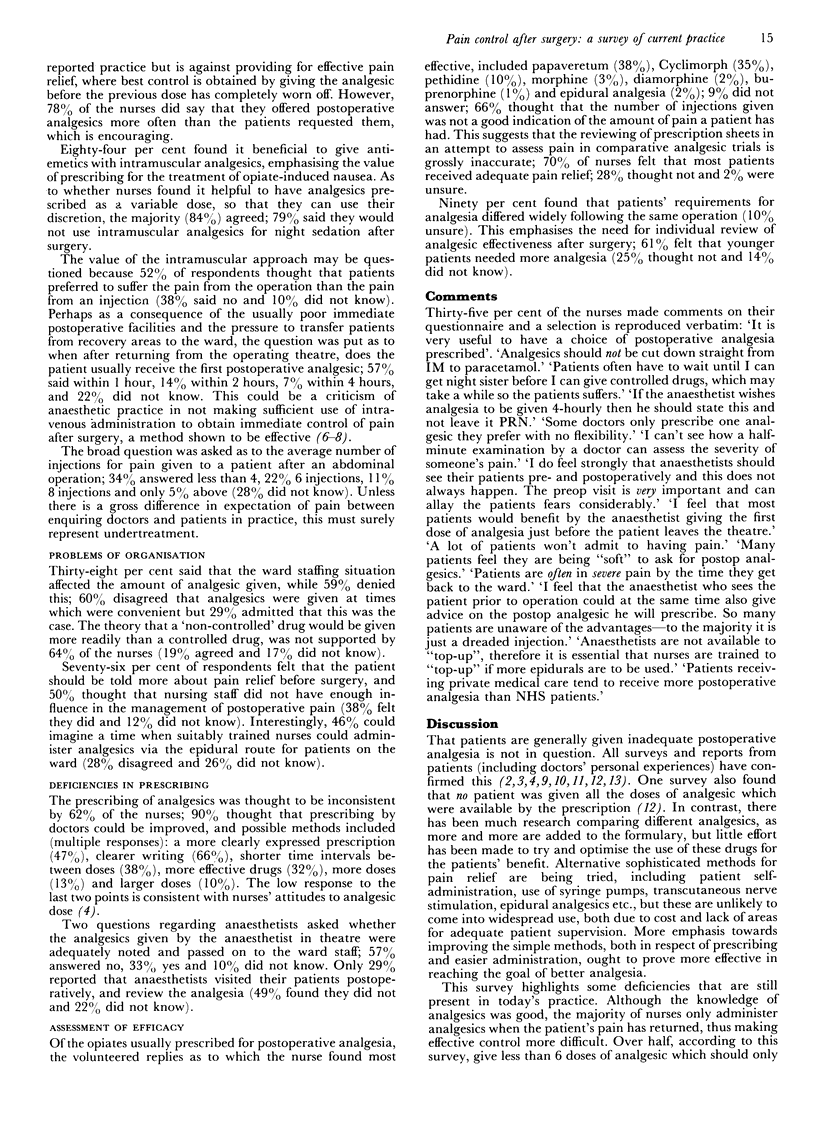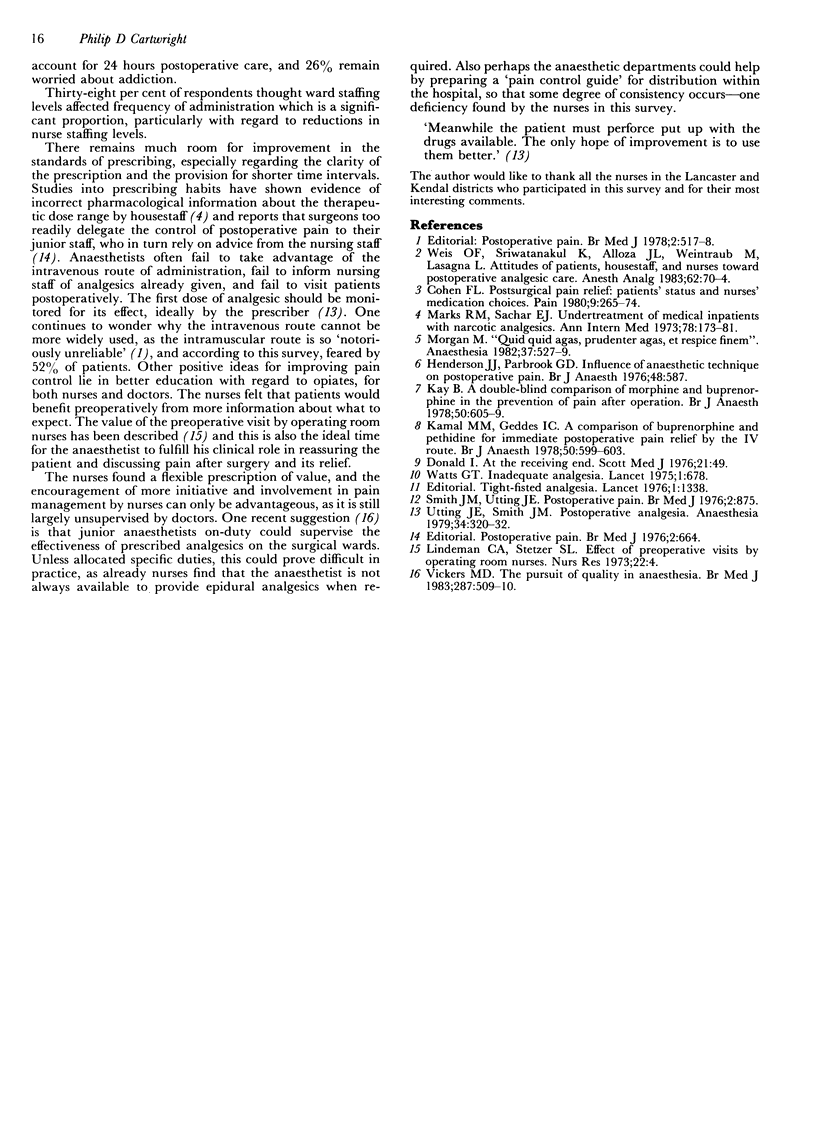Abstract
A questionnaire was sent to 302 qualified nurses in an attempt to elicit their current practice of administering postoperative analgesics, knowledge of the drugs, opinions regarding prescribing habits and comments on how pain control could be improved; 211 nurses replied (70% response). Knowledge was good but practice poor in that 56% give less than six doses postoperatively and the majority of nurses do not give analgesics until the patient is in pain; 66% thought the amount of analgesic given was a poor indication of pain experienced; 62% felt that prescribing by doctors was inconsistent and 90% thought it could be improved. Deficiencies in communication between anaesthetists, nurses and patients were highlighted. The nurses wished for more involvement in pain management and for more education of patients preoperatively. A selection of comments is included and possible simple methods for improving pain control are discussed.
Full text
PDF



Selected References
These references are in PubMed. This may not be the complete list of references from this article.
- Cohen F. L. Postsurgical pain relief: patients' status and nurses' medication choices. Pain. 1980 Oct;9(2):265–274. doi: 10.1016/0304-3959(80)90013-5. [DOI] [PubMed] [Google Scholar]
- Donald I. At the receiving end: a doctor's personal recollections of second - time cardiac valve replacement. Scott Med J. 1976 Apr;21(2):49–57. doi: 10.1177/003693307602100205. [DOI] [PubMed] [Google Scholar]
- Henderson J. J., Parbrook G. D. Influence of anaesthetic technique on postoperative pain. A comparison of anaesthetic supplementation with halothane and with phenoperidine. Br J Anaesth. 1976 Jun;48(6):587–592. doi: 10.1093/bja/48.6.587. [DOI] [PubMed] [Google Scholar]
- Kamel M. M., Geddes I. C. A comparison of buprenorphine and pethidine for immediate postoperative pain relief by the i.v. route. Br J Anaesth. 1978 Jun;50(6):599–603. doi: 10.1093/bja/50.6.599. [DOI] [PubMed] [Google Scholar]
- Kay B. A double-blind comparison of morphine and buprenorphine in the prevention of pain after operation. Br J Anaesth. 1978 Jun;50(6):605–609. doi: 10.1093/bja/50.6.605. [DOI] [PubMed] [Google Scholar]
- Lindeman C. A., Stetzer S. L. Effect of preoperative visits by operating room nurses. Nurs Res. 1973 Jan-Feb;22(1):4–16. [PubMed] [Google Scholar]
- Marks R. M., Sachar E. J. Undertreatment of medical inpatients with narcotic analgesics. Ann Intern Med. 1973 Feb;78(2):173–181. doi: 10.7326/0003-4819-78-2-173. [DOI] [PubMed] [Google Scholar]
- Morgan M. Quidquid agas, prudenter agas, et respice finem: Whatever you do, do cautiously, and look to the end. Anaesthesia. 1982 May;37(5):527–529. doi: 10.1111/j.1365-2044.1982.tb01221.x. [DOI] [PubMed] [Google Scholar]
- Smith J. M., Utting J. E. Personal view. Br Med J. 1976 Oct 9;2(6040):875–875. doi: 10.1136/bmj.2.6040.875. [DOI] [PMC free article] [PubMed] [Google Scholar]
- Utting J. E., Smith J. M. Postoperative analgesia. Anaesthesia. 1979 Apr;34(4):320–332. doi: 10.1111/j.1365-2044.1979.tb04929.x. [DOI] [PubMed] [Google Scholar]
- Vickers M. D. The pursuit of quality in anaesthesia. Br Med J (Clin Res Ed) 1983 Aug 20;287(6391):509–510. doi: 10.1136/bmj.287.6391.509. [DOI] [PMC free article] [PubMed] [Google Scholar]
- Watts G. T. Letter: Inadequate analgesia. Lancet. 1975 Mar 22;1(7908):678–678. doi: 10.1016/s0140-6736(75)91774-2. [DOI] [PubMed] [Google Scholar]
- Weis O. F., Sriwatanakul K., Alloza J. L., Weintraub M., Lasagna L. Attitudes of patients, housestaff, and nurses toward postoperative analgesic care. Anesth Analg. 1983 Jan;62(1):70–74. [PubMed] [Google Scholar]


